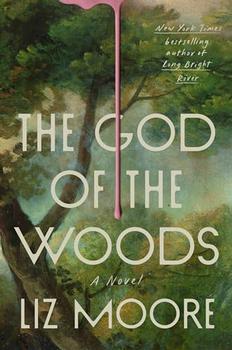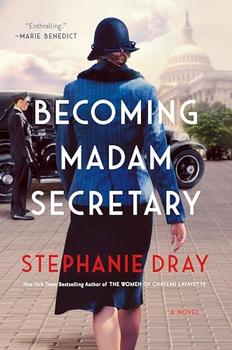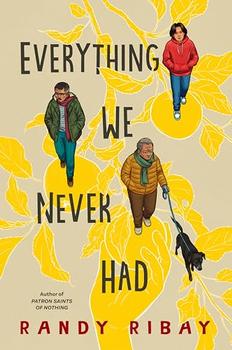(5/7/2023)
Author Susan Meissner says Only the Beautiful focuses on "a movement in history that has been all but forgotten." The eugenics movement led to state laws authorizing the sterilization of institutionalized citizens who had conditions deemed to result from genetic flaws for the purpose of "race betterment." Not only were persons with disabilities discouraged from having children in the name of "making better, healthier babies." Those adjudicated unable to make their own medical decisions were forcibly sterilized. Many of them were labeled "feeble minded" or "imbeciles," but even persons with epilepsy and alcoholism were subjected to the irreversible medical procedure against their will.
When Meissner began her research for the book, she had only passing knowledge of the eugenics movement. While conducting research to pen The Nature of Fragile Things, she happened upon photographs from the 1915 World’s Fair in San Francisco, one of which depicted an exhibit touting eugenics. She continued researching and when she learned about the tragic case of Carrie Buck, she "toyed with" the idea of fictionalizing her story but abandoned the notion because she realized Buck's story "was just too sad." Although Buck earned average grades in school, she lived in poverty and was targeted as an "imbecile," largely because her mother was institutionalized. While a foster child, she was assaulted and impregnated by the foster family's nephew. At just eighteen years of age, she was the first person involuntarily sterilized in Virginia pursuant to a statute which was, unbelievably, upheld by the U.S. Supreme Court’s 1927 decision in Buck v. Bell. The Court found that sterilization of institutionalized persons who were deemed to suffer from a hereditary form of insanity or imbecility was within the power accorded states under the Fourteenth Amendment.
Sadly, Virginia was not the only state seeking “race betterment.” The Buck case permitted laws to be enacted in all fifty states that remained in effect for decades and resulted in the forced sterilization of more than sixty thousand men and women. California, which has for many years provided the broadest civil rights protections of any state, was actually the worst offender. Between 1909 and 1964, the highest number – more than twenty thousand -- of involuntary sterilizations were performed in the state and the law permitting the procedure was not repealed until 1979. It wasn’t until 2003 that the State issued a formal apology and $7.5 million was earmarked for reparation payments to victims in 2021.
Meissner determined to tell a story built around fictional characters, but based on actual historical events that would encompass "powerful, hopeful moments." She succeeded.
Only the Beautiful opens in 1938. Meissner tells the tragic story of Rosie, who grew up in a loving family on a beautiful vineyard in Sonoma County. But school was always difficult for her because she was born with a hereditary condition – synesthesia. For synesthetes, stimulation of one of the senses produces an involuntary reaction in another sense. In her first-person narrative, Rosie explains that sounds cause her to see colors and shapes, and numbers, names, and places all correlate with specific colors. At that time, synesthesia was not yet understood by the scientific and medical communities. Her parents warned her that she perceived the world differently than other people and must keep her experiences secret. She convinced her parents to let her quit school when she turned sixteen because the “colors in my mind were always fighting for my attention, and there were so many sounds at school. Too many. It had been so hard to concentrate.” Math was particularly difficult. Indeed, Meissner notes that, in those days, synesthesia was considered a "flaw to be removed and definitely not to be passed on,” even though her research revealed that many synesthetes find their condition is "beautiful. It adds depth and dimension to their lives. They see colors in the periphery of their mind,” despite the fact that, like fictional Rosie, many of them struggle in school.
As the story opens, Rosie loses her entire family – her parents and younger brother – in a tragic motor vehicle accident and, with no other relatives to care for her, the owners of the vineyard on which she has spent her entire life, Truman and Celine Calvert, take her in. Truman, a World War I veteran, is quiet, reserved, and deferential to his domineering wife who requires Rosie to serve as the family’s maid to prepare her for life beyond the vineyard when she becomes an adult. The arrangement works well for a time, until the Calverts’ son, Wilson, returns for a visit. He brings up a long-ago conversation with Rosie during which he thought she said she could see ghosts. She, of course, denies that, but later confesses the truth to Truman.
At age seventeen, Rosie becomes pregnant, and when she can no longer hide her condition, Celine is incensed. She demands not only that Rosie leave their home immediately but uses her knowledge of Rosie’s synesthesia to see to it that Rosie suffers a fate she never knew was imaginable. She believes that she will be sent to a home for unwed mothers until her baby is born and has no intention of relinquishing her child for adoption. Instead, the county social worker transports her to the Sonoma State Home for the Infirm (modeled after the real Sonoma State Home). Naturally, Rosie protests but quickly learns that objections result in punishment.
Rosie’s story is harrowing, particularly when read with an understanding that it is based upon the experiences of actual victims of prejudice against and misunderstanding of not just synesthesia, but myriad other conditions, as well. Meissner heightens the power of the tale by relating it in Rosie’s own words and from her perspective. She credibly describes her shock about her circumstances, regret about having failed to keep her condition a secret, the horrific living conditions and abuse to which she is subjected in the institution, and her determination to be released and build a meaningful life for herself.
Part Two of Only the Beautiful is told in the first-person by Helen Calvert, Truman’s sister. It opens in 1947 in Lucerne, Switzerland as Helen, at sixty-two, is returning to California after decades spent working for various families as a nanny in Europe. Helen became acquainted with Rosie when she was a young girl growing up at the vineyard, and the Calverts made it a point to share her letters with Rosie over the years. For Rosie’s first Christmas without her family, Helen sent her an amaryllis plant to cheer her, and Rosie treasured it and all it represented.
Helen is understandably weary. She opted to remain in Europe when war broke out, rather than return to the United States. She relates her experiences with the Maier family in Austria, the last family for whom she served as a nanny. She was particularly fond of their youngest child, seven-year-old Brigitta, who was born prematurely and struggled to reach developmental milestones. The Germans invaded and annexed Austria in 1938, and Johannes Maier was forced to serve as an officer in a panzer division while his wife, Martine, remained at home with the children and Helen. But even the family of a Nazi officer was not immune from the atrocities of the Adolf Hitler regime.
When Hitler came to power in Germany, he did not immediately begin constructing concentration camps in which to imprison and murder Jews. His quest to create a “master race” began with measures designed to alter the genetic makeup of the German population through "racial hygiene" or eugenics, relying on ideas that had already been adopted by the mainstream medical community. The Nazis started by involuntarily sterilizing persons they believed should not procreate. The sought to eradicate persons with disabilities, referring to them as “useless eaters.” They did not just target adults. Children were forcibly removed from their parents’ care and transported to special “hospitals” like Am Steinhof and Hartheim Castle where they were subjected to experimentation and murdered.
Helen describes her wartime experiences, and the heartbreakingly unthinkable events Meissner includes are difficult to read about, based upon actual events. Helen never had children of her own, but in her role as a nanny, cared for her charges as though they were her own. But she was, like most people, naïve and could never have envisioned the evils the Nazis were capable of. Wracked with guilt, regret, and remorse, she resolves to save as many children as she can.
And when she returns to California and has a visit with Celine, she is appalled and outraged to learn what transpired in her absence and the fate that befell Rosie. She is determined to find Rosie’s child and enlists her good friends, one of whom is a lawyer, to assist her. Of course, in the late 1940’s and early 1950’s, the internet did not exist, and it was much more difficult to find people . . . and adoption records were sealed.
The actions of the Nazi regime “shown a light on eugenic legislation,” illustrating how such laws led to catastrophic abuse. "It was kind of a defining moment in our history, and it's being forgotten," Meissner laments. Only the Beautiful is a compelling and credible story, set against the backdrop of the monstrous agenda of the Nazis and the abhorrent eugenic movement that gained traction in the United States in the early part of the twentieth century. Through the tragedies that befall her characters and the challenges they face, Meissner illustrates the intersection and similarities of the two, emphasizing their far-reaching and tragic consequences.
Meissner’s characters are fully developed, multi-layered, and empathetic. Rosie, in particular, easily slips into readers’ hearts. A minor, powerless to make decisions about her own life and health, she is ensnared in the custody of the county, victimized by a vengeful, angry, and bitter woman and her weak, despicable husband who claim to care about Rosie, and confined to an institution by medical personnel who fail to listen to her or understand that she is not “inform” or afflicted in any way that makes her incapable of competently parenting. Rosie discovers in the most painful ways that her “parents were right to fear the colors. They are dangerous. People will always distrust what they don’t understand. And what they distrust, they cannot love.”
Helen is also intriguing and sympathetic. She refuses to acquiesce when evil forces come to power, intent on doing whatever she can to help as many children as possible and, perhaps, atone for one innocent, but horrible mistake.
The pace of Only the Beautiful never slows as Meissner’s poignant narratives alternate between past and present before melding seamlessly. Although some plot details are gut wrenching and deeply upsetting, their inclusion is critical to the characters’ motivations and development, as well as the message Meissner seeks to convey. There are times “in our history that we ought not to forget. If we forget our history, we are more apt to repeat it, aren’t we?” Meissner provides an emotionally satisfying conclusion to her riveting story, demonstrating that despite all the cruelty and misguided quests for power and dominance that people are capable of, there are also “people who will stand up for those who can't stand and speak for those who cannot speak and it's their bravery that encourages the rest of us to do the same.” In other words, there is always cause for hope.
Moreover, given that reproductive rights are again at issue in the United States, with increasingly restrictive laws being passed in many states and critical political races poised to hinge on candidates’ positions on the subject, Only the Beautiful is a decidedly timely and contemporary work of historical fiction. The book lends itself to discussion and debate about who has the right and should be empowered to make decisions about bearing and raising children, government overreach into decision-making, and how best to ensure that the dark and shameful historical events Meissner depicts are never permitted to recur.
Thanks to NetGalley for an Advance Reader's Copy of the book.



